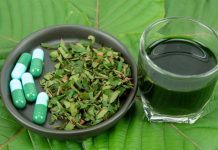People often say that Kratom addiction is similar to that of Opiate addiction. Since Kratom’s properties are always compared to that of pharmaceutical Opiates, therefore addiction of the two substances are also compared. However, Kratom addiction is a different phenomenon. It needs to be discussed separately.
This article basically emphasizes on the topic ‘how long does it take for a person to get addicted to Kratom?’ To answer this, many factors shall be considered for example Kratom daily intake routine, Kratom strains, and their substitution, etc.
What is addiction basically?
When you take certain drugs, you start feeling good. You believe you can control the amount of the drug you are taking. However, there are some drugs, like narcotics, alcohol as well as Kratom that can change the neuronal pathways in the brain.
Slowly and gradually you start feeling that you need drugs just to feel normal. You may start taking higher doses of the drug to achieve the same effect once you become tolerant to it. This is when you are addicted to a particular drug.
Addiction is a long-lasting brain disorder than altering the behavior of a person, i.e., frequent mood swings, dementia, reduced cognition, trouble sleeping, eating disorders, etc.
An addictive substance stimulates the pleasure center of the brain by releasing GABA and dopamine. You start feeling high, and you want to continue taking it even if you are facing negative consequences.
How can Kratom cause addiction?
The active alkaloids Mitragynine and 7-hydroxymitragynine in Kratom act on the delta, kappa and mu receptors present in the brain in a similar fashion to Opiates.
Action on these receptors induces the release of increased amounts of dopamine that increases euphoria and brings about the feeling ‘high.’
Once you stop taking Kratom, the body craves for the increased levels of dopamine, and this is when you start getting mood swings and trouble living a normal life. This is when you are addicted to Kratom.
Kratom causes addiction only over a long enough period of usage. This happens when the ceiling effect is reached. This effect happens after a certain level of dosage when the mood boosting effects of Kratom no more occur. At this point, one has the urgency to take increased doses of Kratom causing Kratom addiction.
Kratom addiction occurs quickly with Kratom extracts, resins, and tinctures. It doesn’t occur rapidly if Kratom powder is used.
Ultra-enhanced Kratom strains must be avoided to prevent Kratom addiction.
Kratom if used for medicinal purposes, doesn’t cause Kratom addiction but Kratom abuse causes extensive Kratom addiction.
What are the signs and symptoms of Kratom addiction and withdrawal?
The signs and symptoms of Kratom addiction are relatively mild and last only for a couple of days. The most common Kratom addiction symptoms include insomnia, restlessness, sweating, nausea, increased yawning, discomfort, emotional issues like aggression and sadness, body aches, depression, apathy, and diarrhea.
Symptoms of common cold also like a runny nose appear when you withdraw the consumption of Kratom after getting addicted to it.
In the initial days you’ll only feel psychological dependence but with continuous use signs of physical dependence may also appear.
How will a person know that he/she is addicted to Kratom?
To identify one as Kratom addict you need to check the following signs;
- Tolerance to Kratom increases. You require more dosage of Kratom to produce desired effects.
- Constipation is a major sign of Kratom addiction.
- You start craving for Kratom and you think about buying it or consuming it throughout the day.
- You start keeping it a secret. You do not tell people that you consume Kratom because they can relate its usage to your problems.
- Addicts use Kratom very regularly and frequently.
- A break in the Kratom taking routine can result in immediate withdrawal symptoms.
- The addict has a loss of control over the use of Kratom. He uses it without having any regard to the negative consequences of the use of Kratom.
- The addict has trouble at school or work and acts suspiciously to keep his/her secret.
How long does it take for Kratom addiction to start?
According to users on various drug forums, addiction starts gradually if one consumes Kratom twice a week. For some people, it may start when he or she’s taking Kratom thrice a week.
The concept behind this theory is that in a week, it’s necessary to stay Kratom free for five days.
If you consume Kratom on day 1, then wait for 3 days and take Kratom on day 4 to prevent addiction. So, addiction can set in immediately if you take Kratom more than two to three times in a week.
It also sets in quicker if there is no strain rotation and you are taking one strain, for example, Maeng da repeatedly.
Kratom addiction sets in rapidly if you are using ultra enhanced Kratom or extracts as these types of Kratom are highly concentrated. Plain leaves are recommended.
A dosage of 8-10 grams per day is fine but doses greater than this can lead to rapid addiction.
Some people are tolerant to Kratom, so they need higher doses.
This should make them realize that they are addicted to Kratom; therefore, they require more doses.
Keep the starting dose as low as 2 grams. Incorporation of some Kratom stem in your Kratom routine can also reduce tolerance and thus addiction.
One of the main causes of addiction is Stagnant strain syndrome or single strain syndrome.
This occurs when the user only consumes one type of strain that has the same quantity of alkaloids. This is why we recommend rotating strains to avoid addiction.
Effects of Kratom addiction
In the long term, Kratom addiction has severe side effects. There have been several cases reported of psychosis in long-term reporters.
Short time side effects of Kratom addiction include dry mouth, nausea, sweating, appetite loss, itching, sun burning, frequent urination, and constipation.
Side effects that result from long-term use include skin discoloration, psychosis, and chronic loss of appetite resulting in weight loss, insomnia, and confusion.
Psychosis may be accompanied by hallucinations, delusions, and confusion.
What medication can be used for Kratom addiction?
There’s no specific medication for Kratom addiction. The treatment is usually symptomatic. This treatment includes giving antidepressants, NSAIDS, anxiolytics, dihydrocodeine-lofexidine, methadone, etc.
Psychological treatment that includes cognitive behavioral therapy is also needed for patients who are depressed and have increased cravings for Kratom. This treatment allows one to recognize triggers and how to tackle them.
A detoxification program, supervised by a medical practitioner also helps in the treatment of Kratom addiction.
This includes medical care as well as therapy. To start any such program, see if it’s cost-effective and the facility is duly licensed and accredited and the qualification of staff.
Conclusion
Since Kratom is relatively cheaper than Opiates and other narcotics, people are buying in surplus quantities and consume it in surplus quantities, damaging their health.
This should be avoided at all costs and a check and balance on the use of Kratom must be ensured too.
Self-control is the best way to avoid addiction and the complications associated with it.










Okay, so you shouldn’t take enhanced kratom though it’s the first shopping link I see on the page.